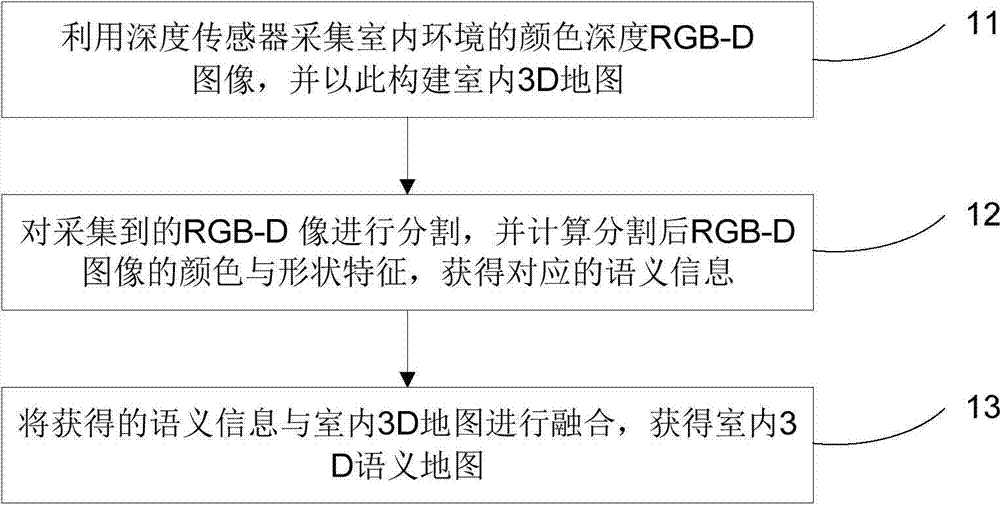Depth sensor-based method of establishing indoor 3D (three-dimensional) semantic map
A depth sensor and semantic map technology, applied in the field of robot vision scene understanding, can solve the problem of lack of semantic understanding of maps
- Summary
- Abstract
- Description
- Claims
- Application Information
AI Technical Summary
Problems solved by technology
Method used
Image
Examples
Embodiment Construction
[0032] The technical solutions in the embodiments of the present invention will be clearly and completely described below in conjunction with the accompanying drawings in the embodiments of the present invention. Obviously, the described embodiments are only some of the embodiments of the present invention, not all of them. Based on the embodiments of the present invention, all other embodiments obtained by persons of ordinary skill in the art without making creative efforts belong to the protection scope of the present invention.
[0033] figure 1 It is a flowchart of a depth sensor-based indoor 3D semantic map construction method provided by an embodiment of the present invention. Such as figure 1 As shown, the method mainly includes the following steps:
[0034] Step 11, using the depth sensor to collect RGB-D images of the indoor environment, and constructing an indoor 3D map.
[0035] In the embodiment of the present invention, the indoor environment can be scanned by ...
PUM
 Login to View More
Login to View More Abstract
Description
Claims
Application Information
 Login to View More
Login to View More - R&D
- Intellectual Property
- Life Sciences
- Materials
- Tech Scout
- Unparalleled Data Quality
- Higher Quality Content
- 60% Fewer Hallucinations
Browse by: Latest US Patents, China's latest patents, Technical Efficacy Thesaurus, Application Domain, Technology Topic, Popular Technical Reports.
© 2025 PatSnap. All rights reserved.Legal|Privacy policy|Modern Slavery Act Transparency Statement|Sitemap|About US| Contact US: help@patsnap.com



